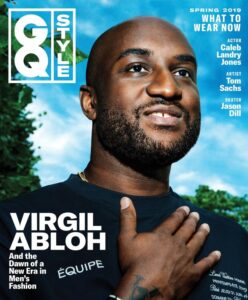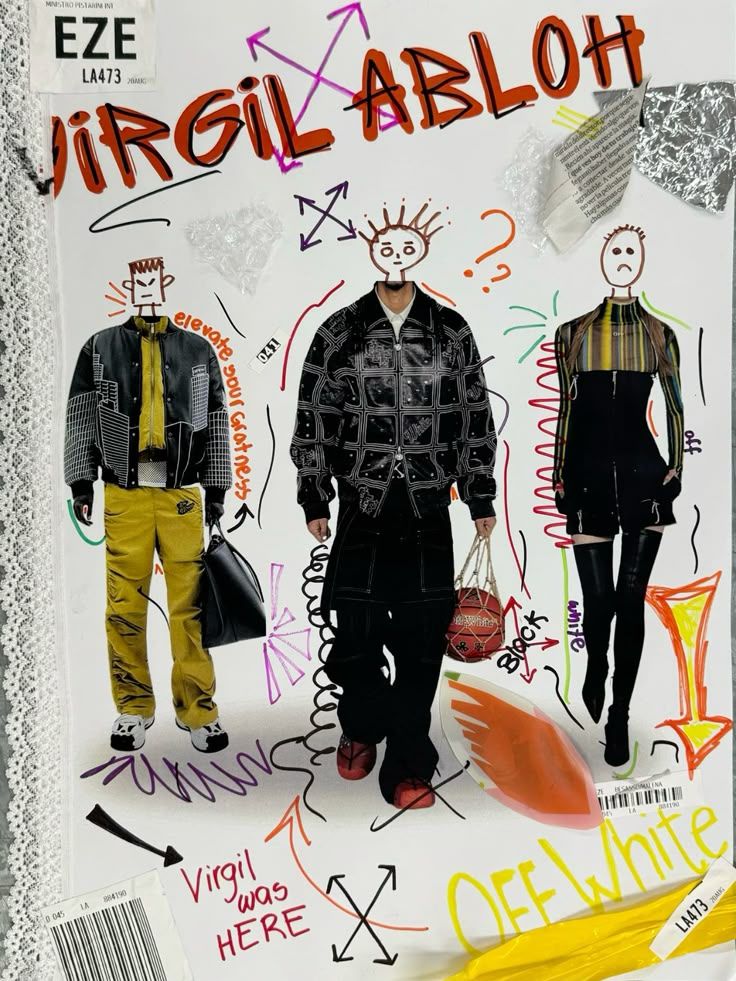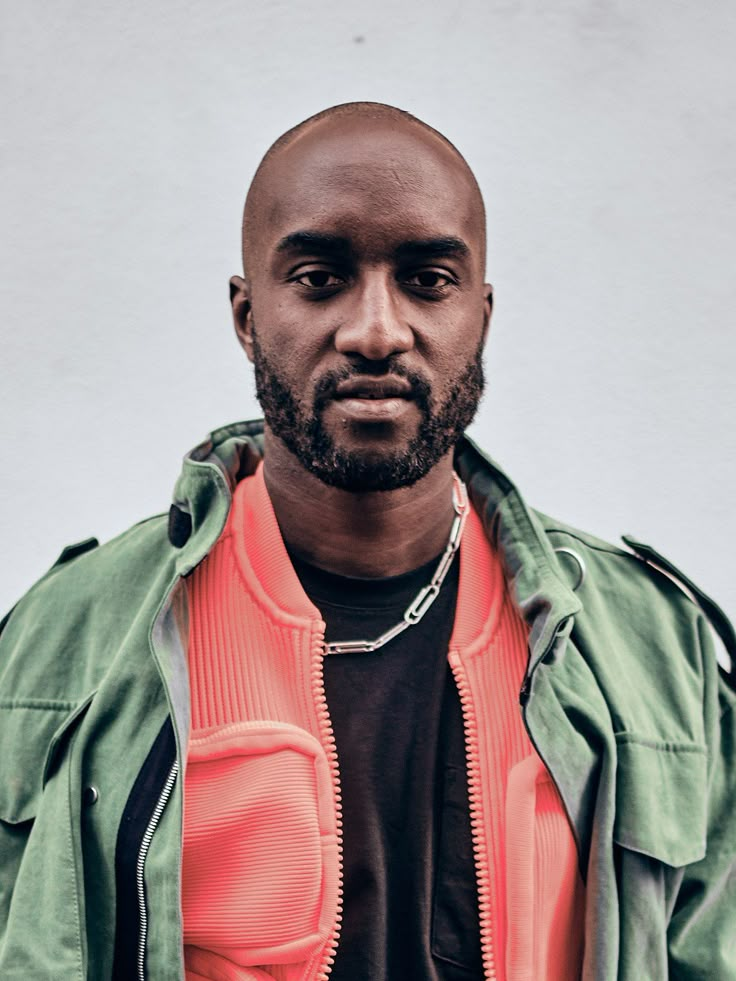How an architect from Illinois became fashion’s most influential cultural translator
October 12, 2025 — In the often-impenetrable world of high fashion, Virgil Abloh didn’t just open doors—he removed entire walls. The Ghanaian-American designer, architect, and visionary who passed away in 2021, left behind a legacy that continues to reshape how we think about creativity, Black excellence, and the very boundaries between street culture and luxury fashion. For brands like Star and Shield Clothing that celebrate the fusion of heritage and innovation, Abloh’s journey offers powerful lessons in maintaining cultural identity while rewriting industry rules.
From the Midwest to Milan: The Early Foundations
Virgil Abloh’s origin story defies fashion industry conventions. Born in 1980 in Rockford, Illinois to Ghanaian immigrants, Abloh was raised between cultures—a experience that would later define his ability to translate between fashion’s established codes and street culture’s vibrant energy.
His educational path reveals the technical foundation beneath his creative genius:
· Civil Engineering (B.S., University of Wisconsin-Madison, 2002)
· Architecture (M.A., Illinois Institute of Technology, 2006)
It was during his architecture studies that Abloh encountered the work of Rem Koolhaas, whose Prada store designs demonstrated how physical spaces could fuse with fashion. This intersection of disciplines would become Abloh’s creative playground.
Abloh’s entry into fashion began unexpectedly alongside another budding icon—Kanye West. The two met in Chicago and later interned together at Fendi in Rome in 2009, where they earned a mere $500 monthly stipend while absorbing luxury fashion’s inner workings. This apprenticeship period proved crucial, with Louis Vuitton CEO Michael Burke noting Abloh’s potential even then.
The Ascent: Pyrex, Off-White, and a New Vision
Abloh’s first fashion venture, Pyrex Vision (2012), served as what he would later call an “art project”. The approach was telling: he purchased deadstock Ralph Lauren flannel shirts for $40, screen-printed them with the Pyrex logo and the number 23 (referencing Michael Jordan), and sold them for $550. This act of transformation—elevating existing garments through contextual changes—would become foundational to his methodology.
In 2013, Pyrex evolved into Off-White, the Milan-based label that would catapult Abloh to global recognition. He described the brand’s name as representing “the gray area between black and white”—a metaphor for his entire approach to blurring cultural categories.
Off-White’s distinct visual language became instantly recognizable:
· Quotation marks around product descriptions
· Industrial zip-ties attached to accessories
· Barricade tape patterns
· Capitalized text and arrows
What made Off-White revolutionary wasn’t just its aesthetics, but its communication strategy. Abloh built the brand directly with consumers through Instagram, bypassing traditional fashion media gatekeepers. When Vogue editor Anna Wintour repeatedly declined to attend his shows, Abloh simply went around the establishment, telling his publicist: “Let me meet them so I can see how the game is played”.

The Landmark Appointment: Reimagining Louis Vuitton
In March 2018, the fashion industry witnessed a historic transition. Louis Vuitton named Abloh as the new Artistic Director of Menswear, making him the first African-American to lead the brand’s menswear line and one of the few Black designers at the helm of a major French fashion house.
His debut collection in June 2018 at Paris’ Palais-Royal gardens was more than a fashion show—it was a statement about inclusion. The rainbow-colored runway welcomed 1,000 fashion students, while the first third of models were Black, including friends from Abloh’s music industry circles. The show notes highlighted the models’ diverse countries of origin, reinforcing the global perspective Abloh brought to the historic house.
During his tenure, Abloh achieved what The Wall Street Journal noted as “a level of global fame unusual for a designer”. He didn’t just design collections; he initiated systemic changes:
Diversity and Inclusion Initiatives
· Creation of the LVMH Black Database to discover Black talent
· Establishment of the LVMH Diversity Panel to advance BIPOC visibility
· Launch of the Post-Modern Scholarship Fund supporting Black fashion students
The Abloh Methodology: “3% Approach” and Creative Bridges
Abloh often described his creative process as the “3% approach”—making minimal but transformative changes to existing designs. He drew inspiration from Marcel Duchamp, the conceptual artist who pioneered the idea of the “readymade” by presenting ordinary objects as art through contextual shifts.
This methodology made him particularly effective at collaboration. His legendary partnerships crossed industries and price points:
· Nike’s “The Ten” (2017): Reimagined ten iconic sneakers that sold out in minutes, crashing Nike’s SNKRS app
· IKEA Collaboration (2019): Brought his design philosophy to affordable furniture, including the iconic “SCULPTURE” bag
· Rimowa: Created transparent luggage that reimagined travel aesthetics
· Mercedes-Benz: Designed a concept car that blended automotive and fashion design
Abloh resisted the title “designer,” preferring “image-maker” or “maker”. His Harvard-published “cheat codes” included working without perfectionism, creating “societal commentary,” and importantly, “question your mentors”.
Legacy and Lasting Impact
When Virgil Abloh died from cardiac angiosarcoma in November 2021 at age 41, he had kept his diagnosis private for two years while maintaining an astonishing creative output. His final Instagram post captured his ethos: “you can do it too…”.

His legacy continues through:
· The ongoing Post-Modern Scholarship Fund supporting future Black designers
· Exhibitions like “Figures of Speech” at Chicago’s MCA
· A generation of designers he mentored, including Samuel Ross and Heron Preston
· The democratization of fashion through direct consumer engagement
Lessons for a New Generation of Designers
Virgil Abloh’s journey offers powerful insights for brands navigating the intersection of heritage and innovation:
- Embrace Your Dual Perspective: Abloh’s Ghanaian-American background became his superpower, allowing him to translate between cultures with authenticity.
- Build Direct Relationships: By bypassing traditional gatekeepers and speaking directly to consumers via social media, he created a devoted community.
- Cross-Pollinate Disciplines: His architecture background informed his fashion designs, proving that innovation happens at intersections.
- Leave the Door Open: Throughout his career, Abloh championed mentorship and inclusion, understanding that representation creates lasting change.
At Star and Shield Clothing, we see Virgil Abloh’s legacy as a reminder that the most powerful creativity often emerges from cultural translation—honoring where we come from while boldly reshaping where we’re going. His career demonstrates that the future of fashion isn’t about choosing between heritage and innovation, but about building bridges that allow both to evolve together.
What bridges will you build? Share your thoughts in the comments below.


Leave a Reply